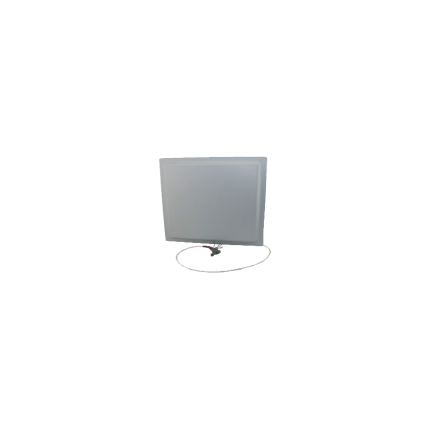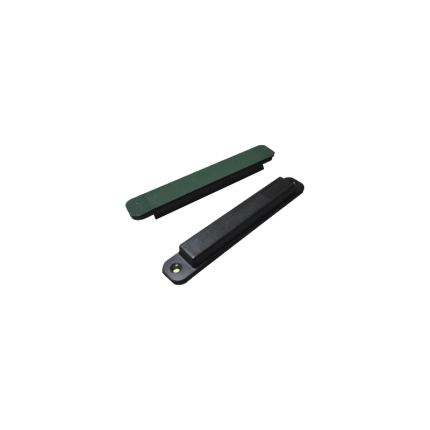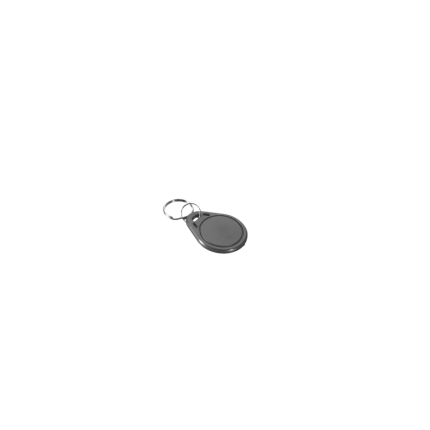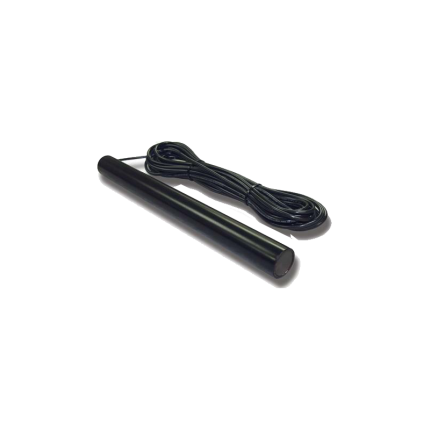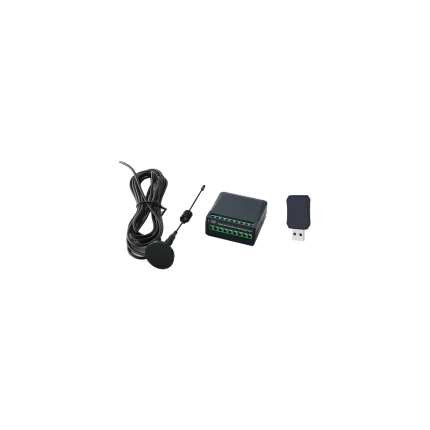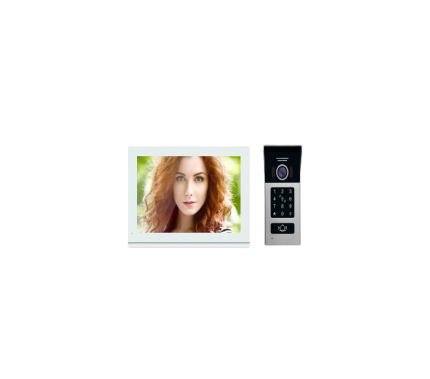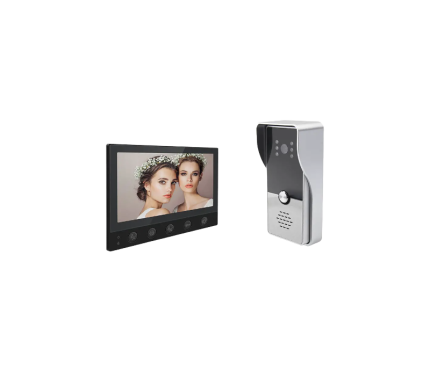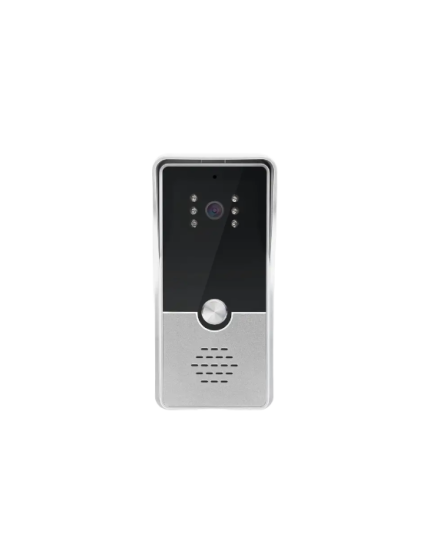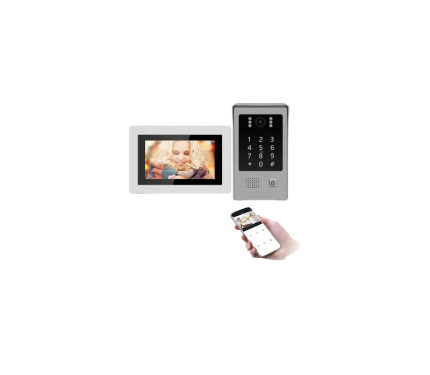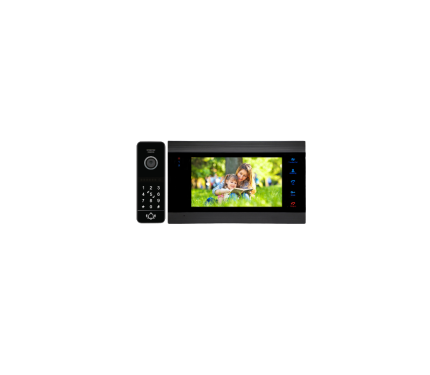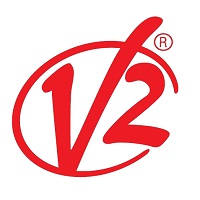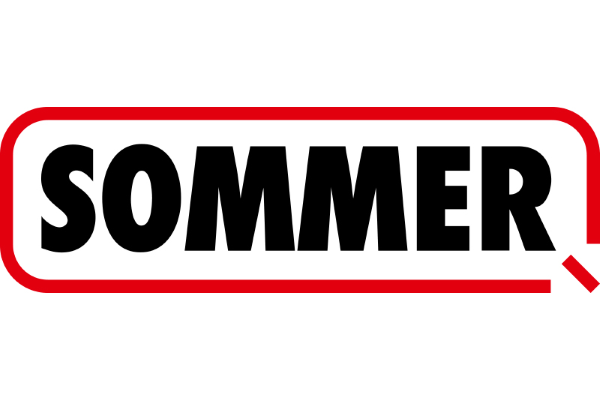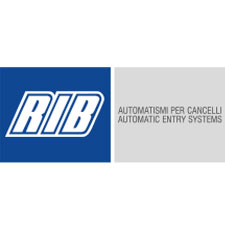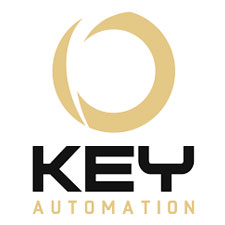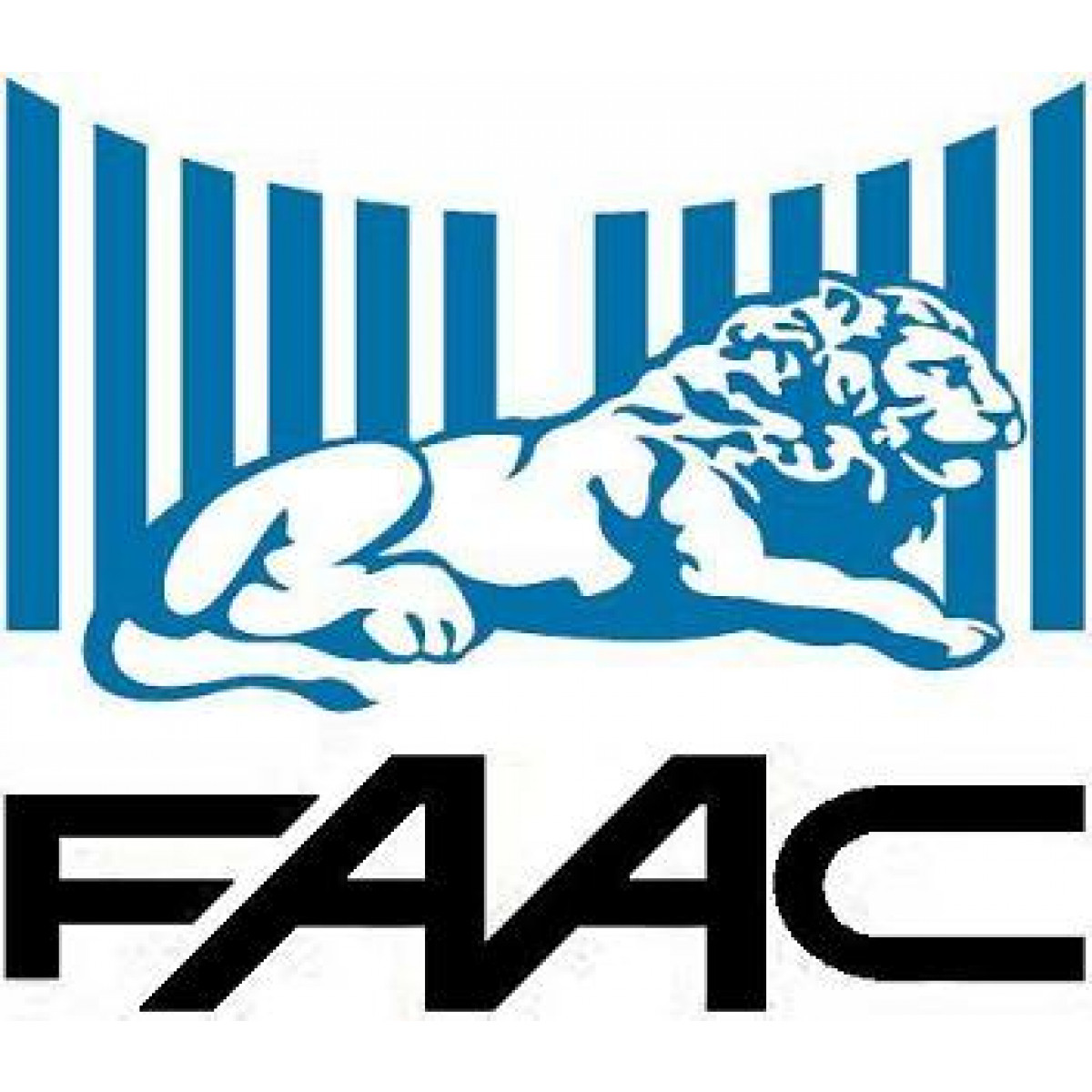Access Control
UHF Gate Controller
Ship or pick up from our office.
UHF Gate Controller
A UHF Gate Controller is a system that uses Ultra-High Frequency (UHF) Radio Frequency Identification (RFID) technology to manage and control access through a gate or designated entry/exit point. It typically consists of a UHF RFID reader, antennas, and a control unit that processes the data and triggers the gate mechanism. It's designed for automated, hands-free identification and tracking of people or objects equipped with UHF RFID tags, offering a longer read range and faster processing compared to other RFID frequencies. How it Works The fundamental principle of a UHF Gate Controller relies on the interaction between a UHF RFID reader and UHF RFID tags. Here's a breakdown:- UHF RFID Reader and Antennas: The gate controller incorporates a UHF RFID reader connected to one or more antennas. These antennas emit radio waves in the UHF frequency band (typically 860-960 MHz).
- RFID Tags: People, vehicles, or items needing access are equipped with UHF RFID tags. These tags contain a microchip that stores data (like a unique ID) and an antenna. Passive UHF tags, which are common in these systems, do not have their own power source; they draw power from the radio waves emitted by the reader.
- Data Exchange: When a tagged item or person enters the read range of the gate's antennas, the RFID tag is energized by the reader's radio waves. The tag then modulates these waves to send its stored data back to the reader.
- Data Processing and Control: The UHF RFID reader receives the tag's data and sends it to a control unit (often an integrated part of the gate system or a separate access controller). This control unit verifies the tag's information against a database of authorized entries.
- Gate Activation: If the tag is authorized, the control unit sends a signal to open or enable the gate (e.g., a barrier arm, turnstile, or door lock). If the tag is unauthorized, access is denied, and an alarm might be triggered.
- Directional Detection and Anti-Collision: Advanced UHF gate controllers can detect the direction of movement (e.g., entering or exiting) and employ anti-collision algorithms to read multiple tags simultaneously, even in high-traffic scenarios. Some systems use additional sensors (like infrared) to improve accuracy and prevent "tailgating."
- Long Read Range: Typically able to read tags from several meters away, allowing for "hands-free" and "drive-through" access.
- High Reading Speed: Can quickly identify multiple tags in motion, reducing bottlenecks.
- Anti-Collision: Algorithms that allow the reader to differentiate and read multiple tags present in the field at the same time.
- Directional Sensing: Ability to determine if an item or person is entering or exiting the controlled area.
- Integration Capabilities: Often connect with other security or management systems via interfaces like Ethernet, RS232, RS485, or Wi-Fi.
- Robust Design: Many are built for industrial or outdoor environments, with resistance to dust and water.
- Vehicle Access Control: Managing entry and exit for parking lots, gated communities, corporate campuses, and toll roads. Vehicles can have tags on windshields, allowing for seamless, hands-free access.
- People Access Control: Controlling access to buildings, restricted areas, and for time and attendance tracking in offices, universities, hospitals, and event venues.
- Logistics and Warehouse Management: Monitoring the flow of goods, pallets, and containers in and out of warehouses, distribution centers, and production lines for inventory management, asset tracking, and theft prevention.
- Retail: Used at store exits for Electronic Article Surveillance (EAS) to prevent shoplifting, and for inventory tracking as items move in and out of the backroom.
- Libraries and Document Management: Tracking books, documents, and other assets as they enter or leave a facility.
- Manufacturing: Monitoring materials and finished products on production lines and at factory entrances/exits.
UHF Label
Ship or pick up from our office.
UHF Label
A UHF (Ultra-High Frequency) label access control system uses radio-frequency identification (RFID) technology operating in the ultra-high frequency range (typically 860-960 MHz) to manage and control access to specific areas, buildings, or resources. It's a touchless, automated system that offers long-range reading capabilities and the ability to identify multiple items simultaneously, making it highly efficient for various applications like vehicle access, personnel tracking in large facilities, and event management. 🛂 How it Works The core principle of a UHF label access control system relies on the communication between RFID tags (labels) and RFID readers. Here's a breakdown of the process:- RFID Tags (Labels): These are small electronic devices, often in the form of adhesive labels, cards, or embedded devices. They contain a microchip that stores unique identification data and an antenna. Most UHF tags used in access control are passive, meaning they don't have their own power source and rely on the energy emitted by the reader.
- RFID Reader: The reader emits radio waves, creating an electromagnetic field. When a UHF RFID tag enters this field, it absorbs energy from the waves, which powers its microchip.
- Data Transmission: Once activated, the tag modulates the waves to transmit its stored data (its unique ID) back to the reader.
- Data Processing and Verification: The reader captures and decodes this data, then sends it to a central access control system (often a computer with specialized software and a backend database). The system verifies the tag's unique ID against a list of authorized credentials and pre-defined access rules.
- Access Granting/Denial: If the tag is authorized, the system sends a signal to unlock a door, open a gate, or grant access. If not authorized, access is denied, and the system may trigger an alarm or log the attempted entry.
- Logging: The system typically records all entry and exit events, providing a detailed audit trail for security and management purposes.
- UHF RFID Tags/Labels: These are the physical identifiers worn by individuals or attached to vehicles/assets. They store the unique ID and are read by the system.
- UHF RFID Readers: These devices emit radio waves to power and read the data from the tags. They are strategically installed at entry/exit points (e.g., doorways, gates). Fixed readers are common for specific zones, while handheld readers offer flexibility for mobile applications like inventory or searching for tags.
- Antennas: Connected to the readers, antennas are responsible for transmitting and receiving the radio signals. The type and placement of antennas affect the read range and coverage area.
- Access Control Software/System: This is the "brain" of the system. It manages the database of authorized tags, processes the data received from readers, applies access rules, and controls the locking mechanisms. It often integrates with other security or building management systems.
- Backend Database: Stores all the information related to RFID tags, authorized users, access levels, and event logs.
- Locking Mechanisms: These are the physical devices controlled by the system, such as electronic door locks, gate barriers, or turnstiles.
- Long Read Range 📏: UHF systems can read tags from several meters away (typically 3-10 meters, and sometimes up to 25 meters or more), allowing for hands-free and rapid access, particularly useful for vehicles or large volumes of people.
- High-Speed Data Transmission and Multi-Tag Reading ⚡: They can read multiple tags simultaneously (often over 100 tags per second), significantly improving efficiency in high-traffic areas and during events.
- Enhanced Efficiency ⏱️: Automation of access eliminates manual checks, reduces queuing times, and frees up staff for other tasks.
- Improved Security 🔒: Each tag has a unique identifier, making it difficult to forge or duplicate. The system provides real-time monitoring and detailed audit trails, enhancing accountability and security. Integration with other systems like surveillance cameras can further bolster security.
- Touchless Operation 🖐️: The long read range enables touchless access, which is beneficial for hygiene, particularly in high-traffic areas or environments where physical contact should be minimized.
- Scalability 📈: UHF RFID systems can be easily scaled to accommodate a growing number of users and access points without compromising performance.
- Durability and Resistance 💪: UHF tags are often resistant to environmental factors like water, oil, and chemicals, and the data stored on their chips is protected. They can also be reused.
- Reduced Wear and Tear: As there's no physical contact with readers, the system components experience less wear and tear, leading to lower maintenance costs.
UHF Licence Plate
Ship or pick up from our office.
UHF Licence Plate
A UHF (Ultra High Frequency) Licence Plate access control system is a vehicle identification and access management solution that uses UHF RFID (Radio Frequency Identification) technology to automatically grant or deny entry to vehicles. Instead of relying on traditional license plate recognition (ANPR/LPR) which uses cameras to read visible plates, UHF systems use RFID tags, often in the form of stickers or cards, affixed to vehicles. 🚗 When a vehicle with a registered UHF RFID tag approaches an access point (like a gate or barrier), a UHF reader emits radio waves. The tag, powered by these waves, transmits its unique identification data back to the reader. This data is then sent to an access control system which verifies the vehicle's authorization. If authorized, the system triggers the gate to open, allowing for fast, hands-free, and seamless entry and exit. This technology is widely used in places requiring efficient and secure vehicle flow, such as:- Gated communities 🏡
- Parking facilities (corporate, commercial, residential) 🅿️
- Industrial sites and logistics hubs 🏭
- Toll roads 🛣️
- UHF RFID Tags: These are small, passive (battery-less) or semi-active devices that contain a microchip storing a unique identification number and an antenna. They are typically affixed to the vehicle's windshield or license plate. When exposed to radio waves from a reader, the tag's antenna collects energy, powering the microchip to transmit its data.
- UHF RFID Readers: These devices are installed at access points (e.g., gate entrances) and emit radio waves to detect and read the RFID tags on approaching vehicles. They have antennas to send and receive signals, and a processor to decode the data from the tags. UHF readers typically have a longer read range (up to 10-12 meters or more) compared to other RFID frequencies, allowing vehicles to pass without fully stopping.
- Access Control System (Software/Controller): This is the "brain" of the system. The reader sends the tag's ID number to this system. The access control software then compares this ID with its database of authorized vehicles. Based on pre-defined criteria (e.g., specific times of day, authorized user groups), it determines whether to grant or deny access.
- Barrier/Gate System: If access is granted by the control system, a signal is sent to the physical barrier (like a boom gate or sliding gate), which opens to allow the vehicle to pass.
- Speed and Efficiency 🚀: Vehicles don't need to stop or roll down windows, significantly reducing traffic congestion, especially during peak hours. This provides a "frictionless" entry experience.
- Long Read Range 📏: UHF RFID allows for detection from several meters away, enabling quick processing of vehicles even at higher speeds.
- Reliability in Diverse Conditions 🌧️☀️: Unlike optical ANPR systems that can be affected by dirt, rain, snow, or poor lighting, UHF RFID tags are generally more robust and less susceptible to environmental factors.
- Enhanced Security 🔒: RFID tags are difficult to duplicate or tamper with, offering a higher level of security than some other methods. The system also logs all entries and exits, providing a clear audit trail.
- Reduced Operational Costs 💰: Automation minimizes the need for manual gate attendants, leading to lower labor costs over time. There's also no need for physical cards or key fobs that can be lost or damaged, saving on replacement costs.
- Integration Capabilities 🔗: These systems can often integrate seamlessly with other security and management platforms, such as visitor management systems, surveillance cameras, and parking management software, for a comprehensive solution.
UHF Tag
Ship or pick up from our office.
UHF Tag
A UHF (Ultra-High Frequency) tag access control system is a security solution that uses radio frequency identification (RFID) technology operating in the ultra-high frequency range (typically 860-960 MHz) to control and monitor entry and exit of individuals or vehicles to restricted areas. 🛂 It's an automated system that identifies an individual or object with a unique RFID tag and, based on pre-defined permissions, grants or denies access. Unlike traditional barcode systems, UHF RFID doesn't require a direct line of sight between the tag and reader, allowing for longer read ranges and the ability to read multiple tags simultaneously. How It Works A UHF tag access control system generally consists of four main components:- UHF RFID Tags: These are small electronic devices containing a microchip and an antenna. The microchip stores data, such as a unique identifier or user information. Passive UHF tags, the most common type, are powered by the electromagnetic field emitted by the reader. Active tags have their own battery, enabling longer read ranges and continuous data transmission.
- UHF RFID Readers: These devices emit radio waves to create an electromagnetic field. When a UHF tag enters this field, it absorbs energy (for passive tags) and uses it to power its microchip. The tag then modulates the waves to transmit its stored data back to the reader. Readers can be fixed at entry points (like doors or gates) or handheld.
- Antennas: Integrated with the reader, antennas are responsible for transmitting and receiving the radio signals. Their design and placement are crucial for optimizing read performance and range.
- Access Control Software/Server: This is the "brain" of the system. The reader sends the decoded tag data to the software, which compares it against a database of authorized users and their assigned access levels. If the credentials match, the software sends a signal to unlock the door, open a gate, or trigger another access action. This software also logs all access events, providing an audit trail.
- Long Read Range: UHF systems can read tags from several meters away, making them ideal for applications like vehicle access control where you don't need to stop and present a card.
- High Read Speed and Multi-Tag Reading: They can quickly read multiple tags at once, which is beneficial in high-traffic areas or for tracking numerous assets simultaneously.
- Automation and Efficiency: Automated identification eliminates the need for manual checks, speeding up entry and exit processes.
- Enhanced Security: By identifying individuals and logging access events, these systems improve security and accountability. Features like encryption and unique IDs help prevent unauthorized access and cloning.
- Durability: UHF tags are often designed to be robust and can withstand various environmental conditions, making them suitable for outdoor or industrial use.
- Scalability: Systems can be easily expanded to cover more access points or accommodate a larger number of users.
- Vehicle Access Control: Automatically granting access to parking lots, gated communities, or corporate campuses without requiring drivers to stop and swipe a card.
- Building and Room Access: Controlling entry to offices, secure areas, or sensitive facilities for employees and authorized personnel.
- Event Management: Using RFID-enabled wristbands or badges for quick and efficient entry to concerts, theme parks, or VIP areas.
- Asset Tracking: While primarily for access, the same technology can track the movement of valuable assets within a controlled environment.
- Personnel Tracking: Monitoring the presence and movement of staff within a facility for safety or operational purposes.
- Interference: Performance can be affected by certain materials like metal and liquids in the environment, which can interfere with radio waves.
- Cost: Initial installation costs can be higher compared to simpler access control methods due to the specialized hardware and software.
- Regulatory Compliance: UHF frequencies are not globally harmonized, meaning system components must comply with regional radio regulations.
- Security Risks: While secure, like any digital system, there's a potential for sophisticated cloning or hacking attempts if not properly secured with encryption and robust protocols.
USB Gate Opener Remote
Ship or pick up from our office.
USB Gate Opener Remote
-
USB Gate Opener Remote Dongle:The device typically includes a small USB dongle that plugs into your car's USB port.
-
Sensing Signal:When the USB is plugged in and the car is in the "on" mode, the dongle emits a sensing signal.
-
Receiver:The signal is received by a unit connected to the driveway gate motor.
-
Gate Motor Activation:The receiver then activates the gate motor, causing the driveway gate to open or close.
-
Dual Control Modes:Some models offer both automatic and manual modes, allowing you to operate the gate either by proximity sensing or by pressing a button on the USB dongle.
-
Compact and Portable:The USB dongle is small and lightweight, making it easy to use and store in your car.
-
Easy Installation:It's designed for simple plug-and-play functionality, requiring no complex setup.
-
Replacement Accessory:The USB gate opener remote serves as a convenient replacement for traditional gate remote controls.
USB Gate Operator Remote
USB Gate Operator Remote
A USB gate operator remote control is a device that allows you to open and close automatic gates or garage doors by plugging a USB dongle into your car's USB port and using it as a remote. USB Gate Operator Remote emits a sensing signal upon receiving a command from the USB port, which then triggers the gate opener to open or close the driveway gate. Here's a more detailed explanation: -How it works: USB Dongle: The device typically includes a small USB dongle that plugs into your car's USB port. Sensing Signal: When the USB is plugged in and the car is in the "on" mode, the dongle emits a sensing signal. Receiver: The signal is received by a unit connected to the driveway gate motor. Gate Motor Activation: The receiver then activates the gate motor, causing the driveway gate to open or close. -Key features: Dual Control Modes: Some models offer both automatic and manual modes, allowing you to operate the gate either by proximity sensing or by pressing a button on the USB dongle. Compact and Portable: The USB dongle is small and lightweight, making it easy to use and store in your car. Easy Installation: It's designed for simple plug-and-play functionality, requiring no complex setup. Replacement Accessory: It serves as a convenient replacement for traditional gate remote controls.Video doorbell
Ship or pick up from our office.
Video doorbell
This video doorbell system is wired, it includes a 1-outdoor color camera and 1-color LCD 7-inch screen. With an ultra-flat design, great sound quality, dimmable display, 16 selectable doorbell tones for additional personalization, integrated video doorphone, and access control, it brings more convenience to daily use. You can both see and speak with all visitors. The outdoor camera provides a 92-degree viewing angle, ABS, and Acrylic front panel to protect against potential vandalism. Waterproofing and IR LED projection provide both durability and clear images no matter the weather or time of day/night.Video Doorbell B102
Ship or pick up from our office.
Video Doorbell B102
*Installing the smart video doorbell B102 using only one pair of wires.* Answer calls and unlock your door from your smartphone or other mobile devices
* Easily identify visitors on the large 7″ screen
* Store calls with no added fees using onboard memory
* Adding a microSD card to the on-site monitor increases call storage
* Watch recorded calls from the on-site master
Use Cases: The video doorbell B102 is a versatile security solution that can be used in a range of applications, including: 1. Private Residences: The intercom provides secure access control and entry monitoring for private residences, ensuring that only authorized persons gain access. 2. Commercial Properties: The video doorbell B102 intercom system is an ideal security solution for commercial properties such as offices, warehouses, and factories that require strict access control measures. 3. Retail Stores: The video doorbell B102 intercom can be used to control access to retail stores and prevent theft and unauthorized entry. 4. Gated Communities: The B102 video doorbell system is a valuable tool for gated communities that need enhanced security measures to protect their residents.Video doorbell B104
Ship or pick up from our office.
Video doorbell B104
The Video Doorbell B104 is an innovative intercom system that has been designed to meet the communication needs of modern residential buildings. With its advanced security features, ease of use, versatility, affordability, and quality assurance, this intercom system is an ideal communication solution for anyone looking for a reliable and cost-effective communication system. Place your order today and enjoy the benefits of a top-quality intercom system. This Video Doorbell System B104 comes with a 7” TFT Screen Monitor & FHD Camera and can be connected with only 4 wires between the house and outside of the property. 4 wires mean video core, audio core, 12V DC, and GND. It is for villa houses and supports extra CCTV cameras and alarm sensors. This KIT has a wide-view angle outdoor unit and a 7" indoor screen. The outdoor station and indoor monitor are 4-wire hard-wired. Built-in power supply and external power adaptor for optional. No matter what kind of house, you can find a suitable solution in Royal Gates!Video Doorbell B122
Video Doorbell B122
*Touch keypad *RFID card or tag *Control two doors/gates *POE Powered *Control the video doorbell system using monitor and smartphone *Rain sheild cover on the camera panel *7” LCD Touch Screen*On the 7" screen monitor, you can view and talk with visitors in real-time, review missed call history, browse through snapshots taken by outdoor stations then store them here.
*Each apartment should have one mandatory main indoor station or up to 5 extension indoor stations.
*All Configurations are done on the main indoor station.
*Compatible with BCOM PoE Doorbell Intercom, add and view up to 6 IP cameras from the indoor station.
Video Doorbell Intercom B101
Video Doorbell Intercom B101
* 7 Inch screen indoor monitor
* Waterproof outdoor station
* Unlock ways: password/ RFID card/ indoor monitor/ Tuya app
* Keypad access control with back light
* Color video doorbell intercom system (Audio and Video) * Night vision light system * Connect monitor to WIFI and control the doorbell system with smartphone worldwide Video Doorbell Intercom B101 System The Video Doorbell Intercom B101 is a 7-inch indoor monitor with a touch button and an outdoor station with a password and RFID card to access the function. The whole acrylic panel makes the indoor monitor full of design. The IP65 waterproof outdoor station can be unlocked by swiping your card, password, and Tuya app, so you don't have to worry about forgetting to bring the key. Motion detection function can protect your house's safety, when someone passes by the outdoor station, an indoor monitor with an SD card can take a picture or record a video for you to check if it is in front of your home. For the WiFi intercom system, you can set the ringtone volume for different periods.
